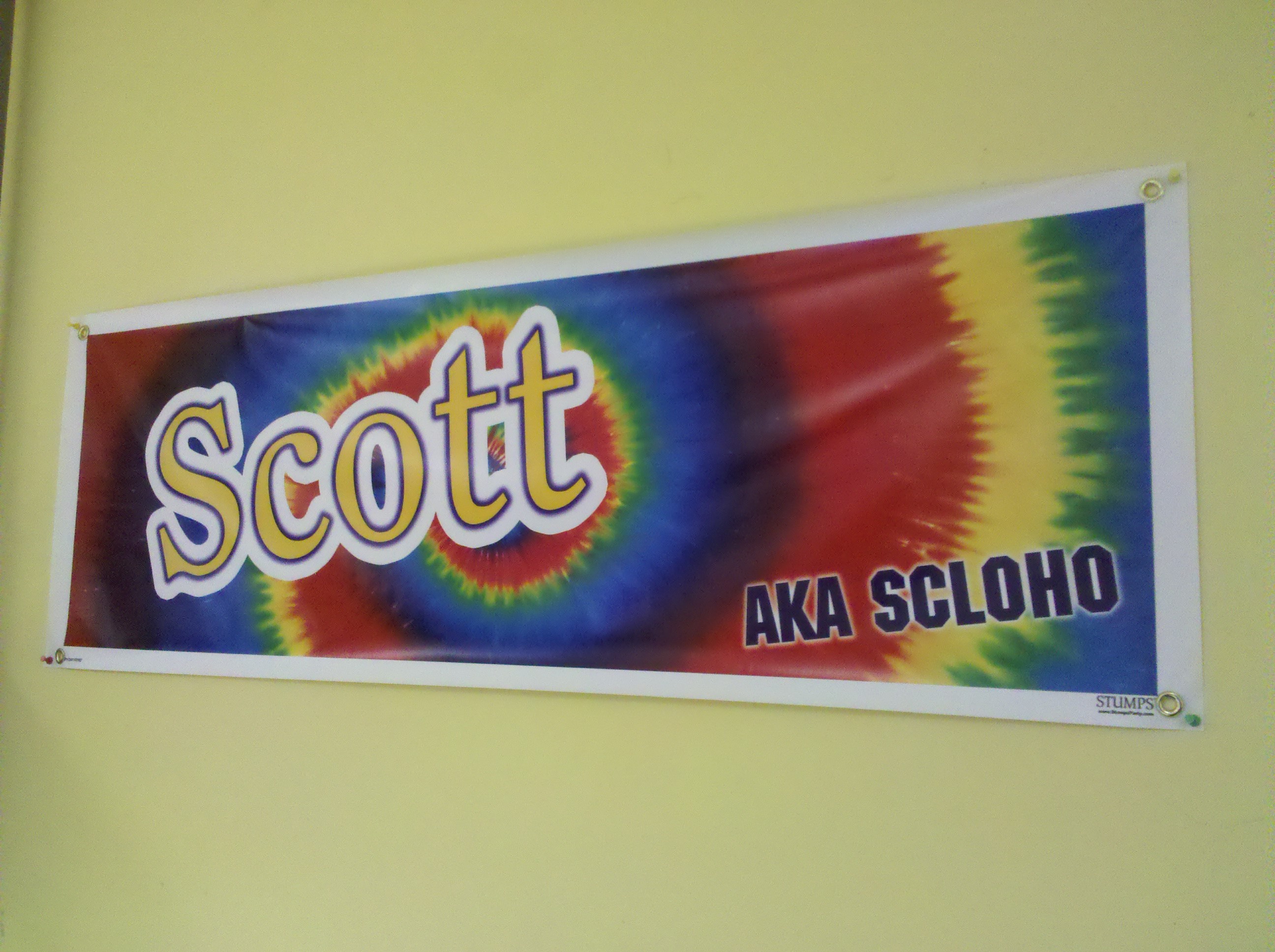
by Scott Howard | Aug 15, 2018 | Marketing and Advertising Insights, Really? The Personal ScLoHo, The Not-So-Secret Writings of ScLoHo, Uncategorized, WOWO Fort Wayne Radio Advertising with Scott Howard
Time to introduce myself, again for some of you that I’ve known for awhile, and perhaps for the first time if you are unfamiliar with this website and podcast.
This is episode 75 of the weekly podcast titled, The Genuine ScLoHo Media & Marketing Podcast.
Launched in early 2017 as a request from a couple of the managers at Federated Media in Fort Wayne, Indiana, they were asked to create a sales and marketing oriented podcast and they asked me if I would consider doing it.
See this ScLoHo thing has been around for quite awhile. On the ScottHoward.me website are over 13 hundred articles I have written, edited and published since 2011 and the Genuine ScLoHo Media & Marketing Podcast is simply an audio version of most of the articles I have created since March, 2017.
The history of ScLoHo however is much longer that that.
And before we dig into that history, I want to clear something up about what ScLoHo is.
ScLoHo began as an email address and grew into an online moniker, identity and nickname. I even registered a marketing company with the ScLoHo name. ScLoHo is a made up word that takes the first two letters of my first name, middle and last names and mashes them together. Scott Louis Howard becomes ScLoHo. Look for me on Twitter, Instagram and nearly any other social media site that I am on as ScLoHo. Before launching the ScottHoward.me website, I published over 10,000 articles on ScLoHo branded blogs starting around 2005.
So ScLoHo and Scott Howard, that’s me, are synonymous.
I began working in the media world as a teenager when my high school launched a radio station. After school, I landed my first full time job on the air in Marion, Indiana at WBAT, followed by WIOU in Kokomo, WMEE in Fort Wayne, WKSY in Columbia City, WZWZ in Kokomo, and WXIR in Indianapolis. At all of these stations, I worked on the air as a disc jockey and radio personality.
 Life changed when I turned 26. I crossed over to the advertising side of the radio business. I was impressed by the philosophy that the Crawford Broadcasting Company had regarding the relationship between the listeners, the radio station and the advertisers. I moved my young family to work for WMUZ in Detroit, one of a dozen Crawford stations at the time. My job was to write and produce advertising campaigns.
Life changed when I turned 26. I crossed over to the advertising side of the radio business. I was impressed by the philosophy that the Crawford Broadcasting Company had regarding the relationship between the listeners, the radio station and the advertisers. I moved my young family to work for WMUZ in Detroit, one of a dozen Crawford stations at the time. My job was to write and produce advertising campaigns.
I loved the challenge and learning that occurred during my 8 years at WMUZ. I also did fill-in work in the afternoon and spent about a year hosting WMUZ’s morning show in Detroit. My first venture as an advertising salesperson was also at WMUZ.
The philosophy that I learned related to the trust factor we as people have. WMUZ was and is a commercial Christian radio station that has a special bond with their thousands of weekly listeners. Listeners trust the WMUZ radio personalities. Those personalities often talk about their advertising partners and so that trust factor is passed along to the businesses that advertise. WMUZ listeners trust that the businesses that advertise on their station are trustworthy.
My job was not just to create effective advertising campaigns, but to screen out the bad businesses from the good. I carry this philosophy today as I consider which businesses I want to work with at WOWO radio in Fort Wayne.
In the mid 1990’s, we decided to leave Detroit and return to Indiana. I worked on the radio again in Fort Wayne at WBTU, WFWI, WGL and WAJI. Between 1995 and 2003, along with some part-time radio work and voice over production I was doing, I took a few blue collar jobs too in the printing business, the plastics industry and even automotive.
2003 was the year that I returned to media and marketing full-time in Fort Wayne when I joined a group of radio stations in the advertising sales side of the business. I spent 8 years rising as high as one could advance at that company before I was lured away to work for a website development company and later manage the social media for a $50 million dollar internet sales company.
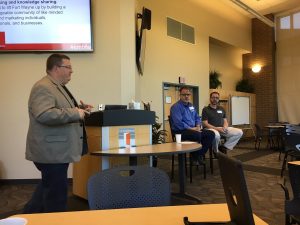
Kevin, Ric and me. Picture snapped by my friend Ryan Recker.
I also served on the Board of Directors for the American Advertising Federation/Fort Wayne Chapter for 7 years. I taught personal branding seminars, guest lectured at a local university, was featured in some national publications including the Wall Street Journal, won a few awards and have had a lot of fun. I have consulted and coached businesses doing newspaper and magazine ads, billboard advertising, social media and all kinds of internet marketing, along with television and event marketing. More recently I was featured on an international podcast for broadcasters to share what it takes to be successful in broadcasting.
I only share all this with you because I want you to have confidence in the Scott Howard dude a.k.a. ScLoHo, that I’m not just hear to sell you stuff. I am here to help. I’m here to teach, to consult, to advise, to coach and even guide you through the process of marketing you and your business.
Human Relationship Principles are the heart of most successful marketing and advertising efforts and I can help you employ them with your business, organization, or event.
I have learned a lot from a lot of people and continue to learn more and more every week. If you have any marketing or advertising questions or answers, I’d love to talk with you.

by Scott Howard | Jul 5, 2018 | Marketing and Advertising Insights, The Not-So-Secret Writings of ScLoHo, WOWO Fort Wayne Radio Advertising with Scott Howard
To be perfectly honest with you, I was in the middle of writing a 3 part series on the 3 R Formula for Advertising Success and I’ve decided to switch things up a bit.
First off, the 3 parter was turning into a 4, 5 or 6 part series and while the information is important, I have other important information and stories to share.
So today, I’m going to dig in and give you the 2nd and 3rd R’s in the formula which goes like this:
Right Message + Right Audience x Right Number of Times = Success
Once you know what the Right Message needs to be, you need to deliver it to the Right Audience.
Now, more than ever in human history, there are more options to deliver your message, but unless you deliver it to the Right Audience, you are wasting your time and money.
I work in both the digital media and traditional media worlds and have seen marketers flock to digital online advertising as they reduce their involvement with the traditional. The thinking is:
With digital media marketing, I can pinpoint the delivery of my ads to precisely the Right Audience and track everything!
Nice theory, but it’s really just a hyped sales pitch. And it’s one part of the 3 R’s Formula for Advertising Success.
Digital Media can deliver ads to highly targeted audiences. But there are plenty of flaws. Sometimes the targeting is too narrow. Sometimes the targeting is too broad. Sometimes people click on an ad by accident. Sometimes the people running the campaigns are amateurs or they don’t understand the differences in “boosted posts”, “dark posts” and well, you get the idea.
A couple years ago, I noticed a company that specialized in Social Media Marketing was doing a terrible job but they were getting paid big bucks by their clients who didn’t know any better. This stuff happens.
I’m not against digital media marketing, I just want to warn you that it’s not the only way to reach your Right Audience with your Right Message. So let’s define what the Right Audience is and then you can decide which advertising mediums to consider.
When I am working with a business owner and I ask them, who they want to reach, too many will say “Everyone!”
So I dig deeper.
Think about the big, mass appeal companies. Walmart, McDonald’s, Google, Amazon to name a few.
While Walmart and McDonald’s have become leaders in their respective businesses, there are plenty of people who will never go to Walmart and plenty who won’t go to McDonald’s. Google and Amazon seem to be taking over the world, but there are still plenty of people who avoid them at all costs.
Reaching the Right Audience with your Right Message is a two part exercise.
Part one begins with you. Who is going to buy what You are selling? Teenagers don’t buy adult diapers. Vegan’s don’t buy hamburgers. You get what I’m saying…
Part two of reaching the Right Audience is finding the advertising vehicle that matches part one. In other words, first determine who your best customers are and then get your Right Message on the advertising medium that will effectively reach your best customers.
Last week I had a conversation with an organization that is looking for volunteers to deliver meals at lunch time to home bound residents. I asked, “Who are your best driver’s now?” and the answer was people between the ages of 50 and 70. While they have some volunteer drivers in their 20’s and 30’s, they are not as stable as the older ones. It’s nothing against them, but in reality, we are going to be more successful recruiting older drivers for this organization.
There are a few advertising options available for reaching this age group and it happens that the most cost effective is going to be my radio station, WOWO radio.
The last part of this 3 R Formula for Advertising Success is the Right Number of times. Remember:
Right Message + Right Audience x Right Number of Times = Success
In this changing media world, I see the Right Number part of this formula being abused.
The Right Number should apply to each individual advertising medium you are using. Don’t add up the total number of TV ads, and Radio ads, count each broadcast channel separately.
In the radio business we often operate with the idea of getting a “3 frequency”. The theory is that it takes 3 times for a person to hear a message before it sinks in. Using insider ratings data, advertising sales people can tell you how many ads it will take to achieve this, but I have a simpler method that I’ll share one day.
Buying one radio ad or one TV ad, or one newspaper ad or one Facebook ad is never recommended. The highest frequency of one ad is always one.
However, I’ve also seen the opposite. Too many ads delivered too frequently. That’s because of not understanding the process or using an automated system that over-delivers to not enough people.
I see this over-delivery on screens, for example watching a TV show on demand that has limited commercials but the same commercials every time. Or another offender is digital display ads that have three or four or more ads on the same page for the same product, company or service.
Determining the Right Number of Times your Right Message needs to be delivered to the Right Audience is the difference between building a positive relationship with your customers or annoying them to the point where they avoid you.
When you are considering inviting people to spend money with you, you need to talk to marketing professionals who understand this entire advertising formula and how to apply it to you and your business.
If you are in Northeast Indiana and want that kind of help, reach out to me.
Here’s links to the other two articles in this series:
The First R in Advertising Success – Part One
The First R in Advertising Success – Part Two
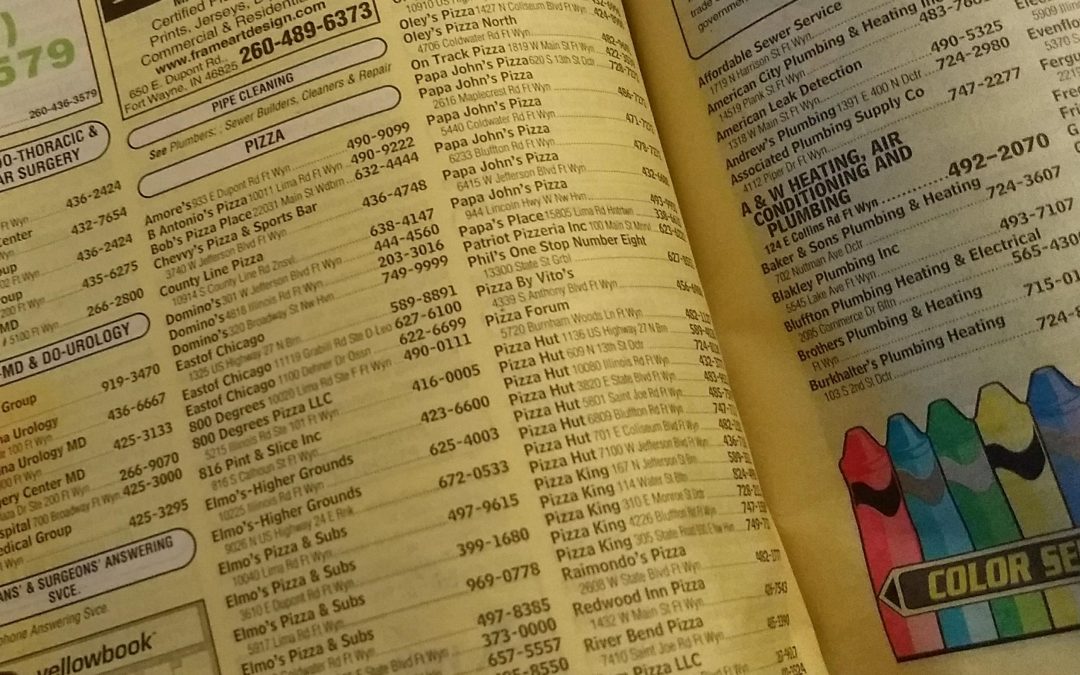
by Scott Howard | Jun 14, 2018 | Marketing and Advertising Insights, ScLoHo's Fort Wayne, The Not-So-Secret Writings of ScLoHo, Uncategorized, WOWO Fort Wayne Radio Advertising with Scott Howard
I offer both radio advertising services with WOWO radio in Fort Wayne, Indiana and digital marketing services via our Federated Digital Solutions division. But today, I’m going to break the hearts of my digital marketing friends with the declaration that: Radio Advertising is the Real SEO!
Every week I have someone tell me that they want to increase their Google rank, which means that they want to be at the top of the Search Engine Results Page when someone Googles their business category.
While that may be a worthy goal, I’m here to tell you, it’s kind of a stupid goal. I’ve been around the advertising world to remember when the printed yellow pages were still being used by consumers.
The Yellow Pages was what our parents and grandparents would use to find a phone number for a business before the internet made it obsolete. This annual publication would list businesses that bought ads in each category and in alphabetical order.
For example let’s say you want to order a pizza.

This is a real pizza from Acme’s FB page
If you don’t have the phone number memorized, ah yes, we used to memorize phone numbers, now I don’t even know my kids phone numbers. Anyway, if you wanted a pizza you got out the phone book and if you were not sure which pizza place to call, you’d look in the Yellow Pages under the category Pizza. That’s where all the pizza joints would be listed in alphabetical order, at least the ones that bought an ad in the phone book.
It was better to be named Acme Pizza than Zoli’s Pizza because Acme was in the front of the listings. Sort of like looking up Pizza on Google, Acme would automatically rank number one on page one . That is until someone opened up Ace Pizza. Because alphabetically Ace Pizza comes before Acme Pizza.
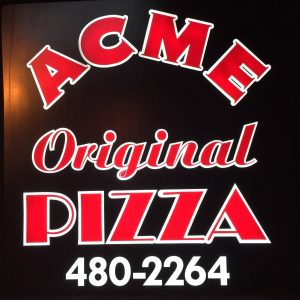
I’ve had pizza from the Acme
That’s how our parents would find the number or address to all kinds of places, the phone book, because they didn’t have the internet.
But you know what was even better than being found in the Yellow Pages with all the other Pizza shops?
Having your customers remember your pizza place so they could look in the white pages instead of the yellow pages. The white pages of the phone book listed everyone in alphabetical order instead of by business category. If my parents wanted a pizza from Zoli’s pizzeria, all they had to do was open the white pages of the phone book, flip to the Z’s and find Zoli’s.
How did businesses like Zoli’s become well known so that people would look for the number for Zoli’s Pizza and not any other pizza place? They developed Top Of Mind Awareness. Their customers knew that Zoli’s was where they wanted to order their pizza from and they did.
This Top Of Mind Awareness is a Human Relationship Principle that I talked about recently. We develop preferences and those preferences are on our short list of consideration. So when someone says, “let’s get a pizza!” we don’t have to wonder, “who can sell me a pizza? and start searching the yellow pages, or to move this scenario up to today, we don’t Google “Pizza”, we Google “Zoli’s”.
Top Of Mind Awareness can help set a business apart when we look online in other ways too.
Because sometimes we do Google “Pizza” and Google gives us about 10 results on the first page of results. Let’s say Zoli’s is on that first page, but they are number 7 and the first 6 listings are for places we either don’t like, have never had, or never heard of before. Top Of Mind Awareness will motivate us to call skip past those first 6 pizza joints and call Zoli’s because just like in the old phone book days, we know we are going to like a Zoli’s Pizza.
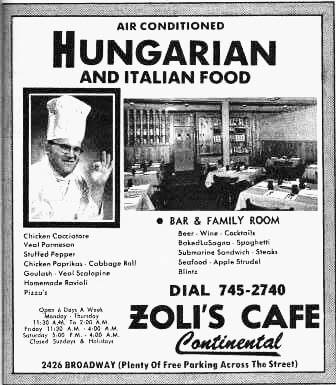
A very old ad for Zoli’s
So back to that statement, Radio Advertising is the Real SEO? How does that work? Radio ads can create Top Of Mind Awareness. Even when we are not thinking about pizza, when the radio station plays an ad for Zoli’s Pizza, we hear it and it reinforces the idea in our head, hearts and stomachs that the next time I want pizza, it’s going to be a Zoli’s Pizza.
I’m going to use a real life example, hamburgers. McDonald’s is the most recognized hamburger brand around the world because they continually advertise to keep that Top Of Mind Awareness going. You can buy a better burger and spend more money than McDonald’s, heck you may never eat at McDonald’s but they certainly have Top Of Mind Awareness, right?
15 years ago when businesses were jumping on the “I gotta have a website for my business” bandwagon, I helped several companies be found online by promoting their website in their radio ads. We still do it. Because it works.
When a business owner tells me that he gets all his customers from Google, we dig a little deeper and discover if they actually had Top Of Mind Awareness when his customers went online or are they just one in a thousand in the search results.
I can help you become the preferred choice for your customers, want my help? Let’s talk.
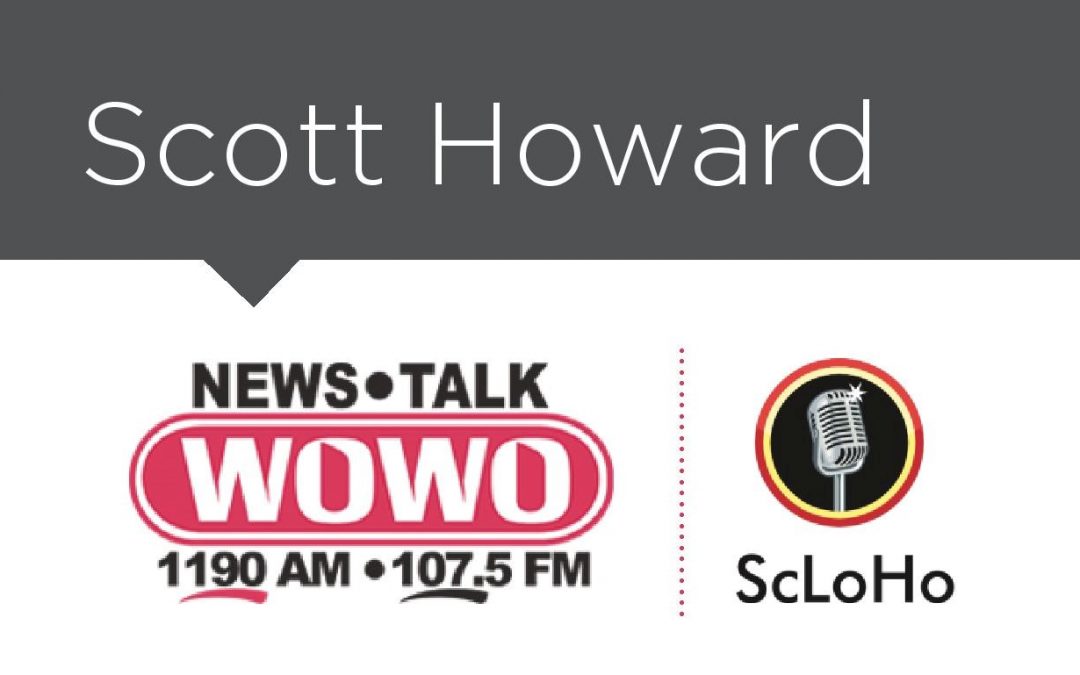
by Scott Howard | Jun 6, 2018 | Marketing and Advertising Insights, ScLoHo's Web World, The Not-So-Secret Writings of ScLoHo, WOWO Fort Wayne Radio Advertising with Scott Howard
This article is for the business owner who is regularly being asked to buy advertising and really needs a little help deciding what to do. (Or perhaps a LOT of help.)
Today, we are going to talk about the pros and cons of advertising agencies, advertising sales people and marketing consultants and what you really need for your business. There was a story in Mediapost that touched on this topic and we’re going to get to the heart of the matter for you.
Should You Hire An Advertising Specialist or Generalist?
You see I’m a bit of both. I’m a big picture marketing guy who has expertise in several specialties.
Start with the basics:
Why advertise? To attract and retain customers. It’s that simple.
Then why is it hard to pick what kind of advertising you and your business should be involved with?
Because there are so many options and all these advertising salespeople who tell you their advertising is the best, whether it’s true or not.
So I sell advertising, what makes me, Scott Howard different? Let’s start with a quote from one of my online profiles:
This is the Big Picture of Marketing, Advertising, and Media, down to the tiniest detail.
Combining the tools of today with the timeless, proven methods of the past and creating ideas that rely on honest, trustworthy human relationship principles.
This Big Picture concept is what makes me an advertising generalist. That’s also the term you could apply to most of the advertising agencies that offer a variety of services. But I’m not an ad agency and I have a unique perspective that’s different than most advertising generalists.
That’s also where the ScLoHo persona comes in. This unique perspective is that all of your marketing and advertising needs to be based on Human Relationship Principles or if they are not, you better have a very good reason why not.
Human Relationship Principles are the natural, organic ways we communicate with one another that promotes trust, and good positive feelings. You incorporate that into a marketing campaign successfully and your business will grow beyond what you could ever do with coupons and gimmicks.
I know how to do this because I’ve been a student of this for a few decades and there are hundreds of businesses in Metro Fort Wayne and Metro Detroit that were my real-life laboratories.
Along the way I also gathered intensive insider knowledge and wisdom regarding what could be called Advertising Specialties. These include:
- Print including newspaper, magazine and direct mail.
- Outdoor including the big billboards, the smaller signage, even the ads we see on city buses. Which brings me to …
- Vehicle wraps, promotional materials and company branded attire.
- Television advertising including cable TV.
- Social Media.
- Website design and structure.
- Search Engine Optimization and Search Engine Marketing.
- Email Marketing.
- Blogging, Vlogging and Podcasting
- and of course Radio Advertising.
Every one of these specialties I have direct experience in and have served on the board of directors for the local American Advertising Federation to enrich my knowledge and teach others. I have even taught branding at a local university, won awards from both my peers and from independent, impartial judging panels. I am not one to blow my own horn and say how great I am, that is out of character for me, but I really want you to know that since I made the transition from being a radio personality to an advertising and marketing specialist over 30 years ago, I have learned a bunch and am continuing to learn. All I want to do is help you with what I’ve learned.
Some of these Advertising Specialties I continue to do first hand and others I will either outsource, recommend others that I trust or at the very least serve as your marketing coach so that when someone tries to sell you their advertising specialty, you have an experienced professional that knows how it should be done and can help you in the process if it’s really something you should invest it. I, Scott Howard, work for WOWO Radio and we have a whole boatload of advertising and marketing solutions you can buy. The ScLoHo side of me helps you with the things I can’t sell you but can advise and guide you.
So back to my original question: Should You Hire An Advertising Specialist or Generalist? Why chose one or the other when you can have both in one person?
Let’s talk.
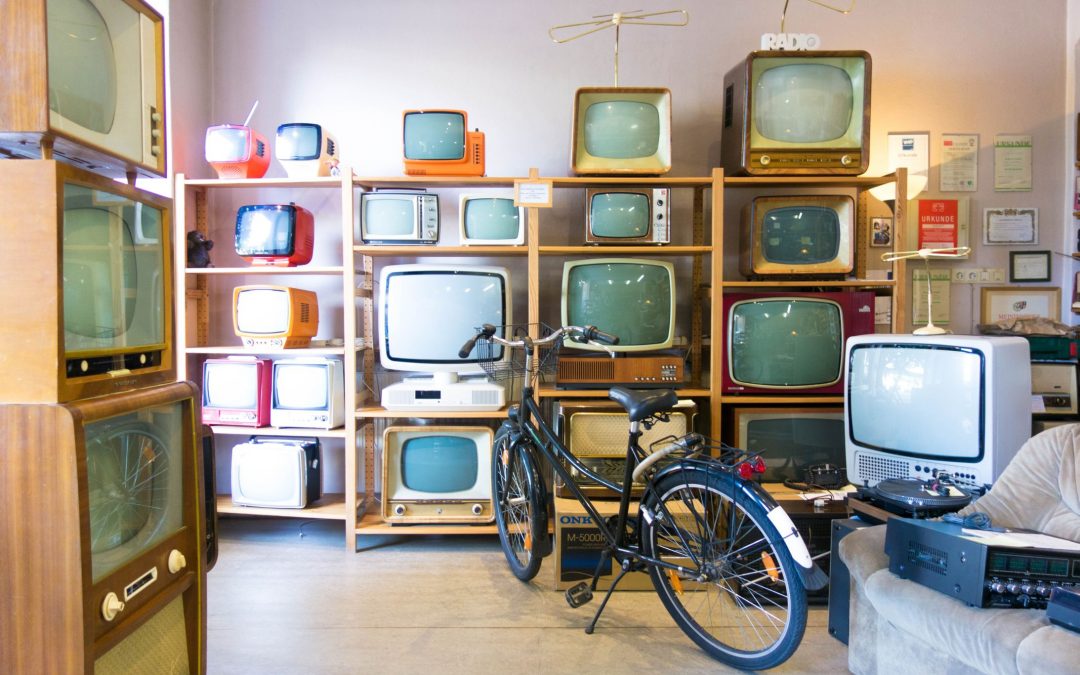
by Scott Howard | May 24, 2018 | Marketing and Advertising Insights, ScLoHo's Collective Wisdom, The Not-So-Secret Writings of ScLoHo, Uncategorized, WOWO Fort Wayne Radio Advertising with Scott Howard
As we head into the unofficial summer season of June, July and August, the three months between Memorial Day and Labor Day, I want to address a headline I saw again and give you an insiders perspective on The Decline of Mass Media.
Why talk about it now? Well, television viewing habits in years past were different during summer time, with the major networks showing summer reruns instead of new episodes. But hang on because I’m getting ahead of myself.
What is mass media anyway? Perhaps traditional media is a better term. Television, Radio, Newspapers and Magazines are the traditional media that have been the mainstay since the 1950’s and before.
Newspapers are continuing to struggle. Lay offs and shut downs have been occurring for nearly two decades, due to the rise of the internet. One story I read this month blamed the owners for cutting staffs.
The Denver Post cut the newsroom from 184 journalists to 99, according to the story. Other cuts at other newspapers were also harsh. 73 reporters down to 10 while another paper went 45 to 12 journalists. Locally in Fort Wayne, the afternoon paper ceased publication, and instead gets one sheet in the morning paper and an online edition. I saw friends of mine in the newspaper business in town leave either on their own or due to cutbacks. I was once tempted about 8 years ago to work for their online division but am grateful I stayed put.
The company I work, Federated Media sold the one newspaper they owned a couple years ago because it was nearly impossible to be profitable.
When I say the internet is the reason for the decline in print, it’s really a combination of things related to the internet.
Accessibility for one. 20 years ago most of us owned a desktop computer with a dial-up modem at home, if we had a home computer. 12 years ago laptops took over as the primary personal computer device. And did you realize that the first iPhone debuted in 2007, ushering in the smartphone revolution?
Online Content is the other contributing factor. No need to wait for the morning paper to check the weather or the score. Newspapers have tried to replace their dwindling subscriber numbers with paywall subscriptions, but the math doesn’t work. If you don’t have the readers, the advertisers will also go away and the decline has been going on for too long.
Declines in the magazine publishing industry are similar. What seems to have survived in print is specialized publications. Smaller but targeted readership than mass media.
Another way the internet has changed the media is the television industry. The New York Times featured a story that I read online about the future of broadcasting: Why Traditional TV Is in Trouble.
Here’s a few quotes:
Ratings are on the decline, especially among young people, some of whom don’t even own televisions. It’s hard to keep up with the many devices and apps people now use to watch shows. And there is a host of material from Silicon Valley that is competing for viewers’ attention, including Google’s YouTube, Facebook and Netflix. It all adds up to a precarious situation for broadcast TV.
Advertising on TV has long been the best way for marketers to reach a large number of people at one time. And it is still a formidable medium. But cracks are showing.
and:
The hottest shows on TV networks — which command the highest ad prices — are attracting older viewers, which is a challenge for brands that want to reach millennials and teens. For instance, this season’s top-rated show, the revival of “Roseanne,” has a median viewer age of 52.9 years. The network show with the lowest median age is “Riverdale” on the CW, at 37.2.
The TV networks will be able to survive by reinventing themselves much like radio stations did when television became a media force last century. But the local TV stations? My advice if you want to reach anyone younger than Baby Boomers, good luck. All of my kids are in their 30’s and none of them are watching broadcast TV, some don’t even own a television. They get their video content online. Even my wife and I watch just as much video content on something other than a TV or if we do, often it’s days later and the local ads are not even seen.

So what is taking the place of traditional broadcast TV as a mass media?
Netflix, Amazon Prime Video, YouTube, to name a few. Alternatives to cable like Sling, Hulu and Roku. These are all offering the best of both worlds for advertisers. You get to reach people watching video content but you get to target your ads to specific audiences, one of the technical marvels of the internet.
Here’s a quote from a newsletter I received from Google:
More than half of 18 to 49-year-olds in the U.S. either don’t watch a lot of TV or do not subscribe to TV. But that doesn’t mean TV content and TV screens are on their way out. In fact, the TV screen is the fastest growing screen for YouTube content, with 70% growth in the last two years.
Let me address the radio broadcasting industry too. It was the first broadcast mass media and WOWO radio, the station I work for is over 90 years old. There are two categories of traditional broadcast radio stations these days, and I’m not talking about AM and FM. The two categories I am referring to are talk based programming and music based programming.
Radio broadcasting started out with network radio shows from NBC, CBS, ABC and the Mutual Broadcasting System and eventually they evolved to what we have today.
In Fort Wayne, Indiana, there are 37 radio stations within close listening range. Some are duplicates of the same programming on different signals, like WOWO 1190 AM is the same as WOWO 107.5 FM, so let’s say there are 25 separate and individual choices. This is also a way of targeting your advertising. The best local radio stations keep an emphasis on local content, stuff you can’t get by listening to Spotify or Pandora.
Federated Media has 6 stations in Fort Wayne, four are music based, two are talk. I work for the talk stations, WOWO and our ESPN affiliated station. Both offer a combination of local and national programs. There are specific characteristics of WOWO listeners that help me determine if advertising on WOWO would be a good idea. Want to reach grown-ups? Let’s talk. Want to reach teenagers? I’ll connect you with someone who works for one of our music stations.
Not all radio stations and radio broadcasting companies are the same. Overall radio listenership has remained pretty steady for the past decade. Over 90% of everyone age 12 and older listens every week. However smart radio stations and companies are staying ahead of the trends that we see going on around us.
For years, radio stations like WOWO offered a way for you to listen via the internet. Go to WOWO.com and click on the listen now tab and you can stream WOWO on your computer. There are plenty of apps that offer access to radio stations like WOWO, and some people listen to WOWO via the WOWO app itself.
2018 however is the break thru year for Alexa and Google Home smart speaker systems. We are seeing a resurgence in radio listening simply by telling the smart speakers to play WOWO and poof, there’s Pat Miller in the afternoon or Charly Butcher in the morning, in your kitchen, just like 40 years ago when I was a kid and my parents had clock radios in their house.
One last way radio stations like WOWO are staying on top of the trends is podcasting. WOWO and our other Federated Media stations share both content from our live shows online in podcast form, but also we have some podcast only shows that are available via iTunes or what ever your favorite podcasting player is. Podcasting is huge and we can connect businesses to podcast listeners too.
The title of this today was The Decline Of Mass Media. As I’ve laid out what’s going on in print and broadcasting in response to the web connected world we live in, I hope you see as I do, these are exciting times. The traditional mass medias that are adapting are going to done fine while the others struggle and will be a mere shadow of their former selves.
Fortunately, I get to work with a company that continues to be on the leading edge and I get to offer advertising and marketing solutions that work using WOWO radio and our digital marketing division of Federated Media.
Want to see how I can help your business grow this year and next? Contact me.
One final piece that I’m going to share because it was posted on LinkedIn by Ben Saurer, WOWO radio’s General Sales Manager that demonstrates how WOWO truly is a leader. Ben’s job is to hire, coach and lead an advertising sales team. Quite frankly, most media companies struggle with this, but as you will see, WOWO is different, in a good way. Here’s what an excerpt from what Ben wrote:
All my people earn above the industry average. Client retention is high. Everyone on my staff is generating more revenue than last year. We’ve had ZERO sales staff turnover in 2+ years while having our market’s largest sales staff. People perform and like working here.
Remember the story I shared about the newspapers cutting their staffs to try and save themselves from going under? Completely different story here at WOWO.

 Life changed when I turned 26. I crossed over to the advertising side of the radio business. I was impressed by the philosophy that the Crawford Broadcasting Company had regarding the relationship between the listeners, the radio station and the advertisers. I moved my young family to work for WMUZ in Detroit, one of a dozen Crawford stations at the time. My job was to write and produce advertising campaigns.
Life changed when I turned 26. I crossed over to the advertising side of the radio business. I was impressed by the philosophy that the Crawford Broadcasting Company had regarding the relationship between the listeners, the radio station and the advertisers. I moved my young family to work for WMUZ in Detroit, one of a dozen Crawford stations at the time. My job was to write and produce advertising campaigns.








